Bond LSC Research
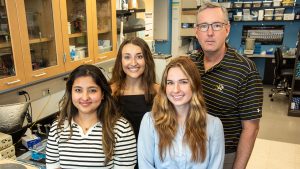
Oct. 2, 2023
Chris Lorson on fast track for spinal muscular atrophy drug
A research grant awarded to MU professor Chris Lorson’s biotechnology company is allowing innovative experimentation with a new spinal muscular atrophy drug. MU Bond Life Sciences Center principal investigator Chris Lorson is forging a new path at the University of Missouri for drug development and clinical trials using a $4.3 million National Institutes of Health (NIH) Blueprint for Neuroscience Research grant. Lorson, a Curators’ Distinguished Professor in veterinary pathobiology, serves as associate vice chancellor for research and strategic initiatives in the Division of Research and associate dean of research and graduate studies in the College of Veterinary Medicine. His research…
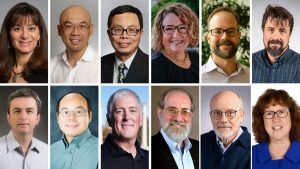
Sep. 20, 2023
Henry Wan among twelve MU faculty named Curators’ Distinguished Professors
The University of Missouri named nine Curator’s Distinguished Professors and approved three emeriti designations. The University of Missouri Board of Curators recently named seven University of Missouri faculty members Curators’ Distinguished Professors. Among the list is MU Bond Life Sciences Center principal investigator Xiu-Feng “Henry” Wan. The professorship is the highest and most prestigious academic rank and is awarded to a select few outstanding scholars with established reputations. To read more, visit showme.missouri.edu.
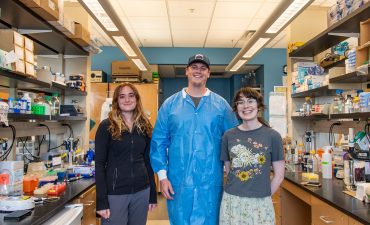
Aug. 4, 2023
Shrinking the Target: Developing Cancer Therapies
Michaela Beedy, Brian Thomas, and Margaret Beecher work on aptamers in the lab of Donald Burke. | Photo by Beni Adelstein, Bond LSC Shrinking the Target: Developing Cancer Therapies As cancer cells multiple and spread, doctors face finding treatments that destroy tumors while doing the least amount of damage. This search for precision in cancer therapies is for good reason. It takes only a few minutes in a chemotherapy clinic to see the detriment of cancer drugs on the rest of the body. “The issue with chemotherapeutic drugs is they have a lot of off-target effects,”…
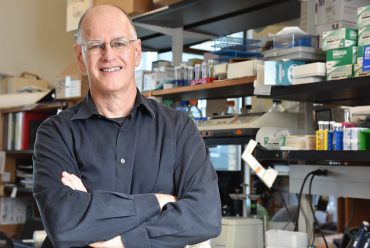
July 25, 2022
Chemical Correspondence: MU researcher plays key role in overseas aptamer technology
By Cara Penquite | Bond LSC Donald Burke is a principal investigator at the Bond Life Sciences Center. He is a professor of molecular microbiology and immunology and a joint professor of biochemistry. Photo by Lauren Hines | Bond LSC What started as an email correspondence between two aptamer enthusiasts rapidly snowballed into a hat trick of authorships for Donald Burke. “I was contacted by a student in India asking if I would be an external advisor for her Ph.D. committee,” said Burke, a principal investigator at MU’s Bond Life Sciences Center. Burke’s extensive research with…
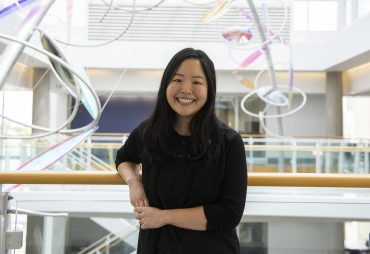
June 20, 2022
A Dual Focus: MU researcher earns $181,734 NIH grant and U.S. Public Health Service Award for COVID-19 research in the lab and on campus
By Cara Penquite | Bond LSC Cynthia Tang is an M.D.-Ph.D. student in the Wan lab. Photo by Cara Penquite | Bond LSC Cynthia Tang’s academic career is marked by her propensity to multitask. From earning a major and three minors during her undergrad to making a documentary while getting lab and clinical experience, she makes the most of her time. Recently Tang received the Excellence in Public Health Award from the United States Public Health Service, and a $181.734 National Institutes of Health grant to be used over four years . . . all while getting…
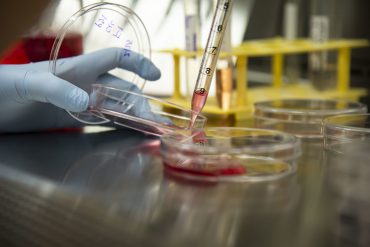
June 6, 2022
Seeing the bigger picture through applied research projects
Investigators at Bond LSC take steps to apply basic research By Cara Penquite | Bond LSC Photo by Lauren Hines | Bond LSC Scribbling in a lab notebook and planning experiments tucked between shelves of equipment, it’s easy to fixate on day-to-day lab operations. But scientists also face the challenge of finding how research can improve the world around us. “The direction, the vision of the lab, ultimately comes from the principal investigator that bridges the research into applied directions,” said Jay Thelen, biochemistry professor and Bond LSC principal investigator Despite the focus on basic…
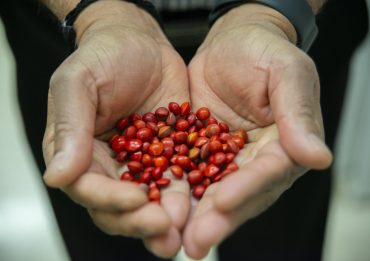
April 20, 2022
Protein or Poison? Research into seed composition shows potential uses as protein source or insecticide
Hari Krishnan holds a handful of A. pavonina seeds. Known for their bright color, the seeds are known among many Asian and African communities as coming from the red bead tree. Photo by Cara Penquite | Bond LSC By Cara Penquite | Bond LSC An energetic and fulfilling day starts with a spread of healthy meals, and many people rely on nutrition labels to meet their daily quota of vitamins and nutrients. But how did scientists measure the Vitamin C in an orange or the protein content in peanuts for the label? Finding out…
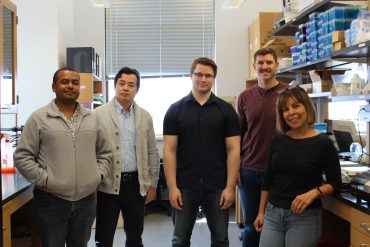
April 13, 2022
Receptors Found to Help Patients with Sjögren’s Disease
The Baker lab poses for a group photograph. The lab has been working with specialized pro-resolving lipid mediators in efforts to help patients with Sjögren’s Disease. Photo by Karly Balslew, Bond LSC By Karly Balslew | Bond LSC Saliva is probably not the first thing that comes to mind when we think about eating our favorite foods. The clear liquid washes away food debris and bacteria, and it plays a vital role in maintaining our dental hygiene and oral health. You may take it for granted, but for patients with Sjögren’s disease, life without saliva is…
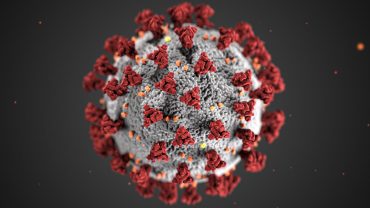
March 16, 2022
Competing with COVID: Researcher suggests varying from vaccines to fight virus
COVID-19 virus particles have spike proteins, represented in red, that attach to receptors on host cells. Antivirals block the receptors on host cells so the virus cannot infect more cells. | Creative Commons Photo By Cara Penquite | Bond LSC Vaccines were the light at the end of the tunnel throughout the COVID-19 pandemic, but virus mutations threaten to extinguish hope of a quick end to the pandemic. Kamlendra Singh turns towards antivirals as the next step. “There will be a time we will find an antiviral which will be very difficult for the virus to mutate…
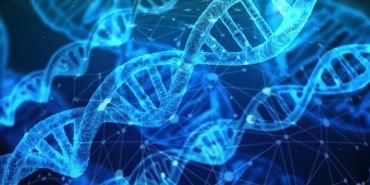
March 3, 2022
Protecting Plants: Researchers identify genes responsible for vital antimicrobial proteins
DNA is the genetic material that determines the characteristics of plants and animals. Using CRISPR gene editing, researchers altered the characteristics of rice plants. | Creative Commons Photo by Pixabay By Cara Penquite | Bond LSC A tickle in the throat, a stuffy nose, congestion . . . the tell-tale signs of a cold are familiar to most, and many know that with enough rest, the immune cells on standby in the human body will destroy any invaders. But what happens when plants get sick? The Bing Yang Lab from the Bond Life Sciences Center at the…
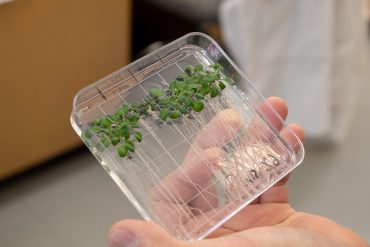
Feb. 24, 2022
Another piece of the pathway: Stacey lab identifies enzyme key to regulating plant metabolism
Researcher Sung-Hwan Cho holds mutant Arabidopsis thalianas. The Gary Stacey lab used these mutant variations to study how plants react to external stressors. | Photo by Karly Balslew, Bond LSC By: Karly Balslew | Bond LSC When we get hurt, our body signals our brain to warn us about stress and damage. We acknowledge the damage and then initiate the proper steps to heal. Plants may have different receptors that read these stress signals, but the process is similar. “When someone crushes the plant tissue, this triggers their immune system like us,” said Sung-Hwan…
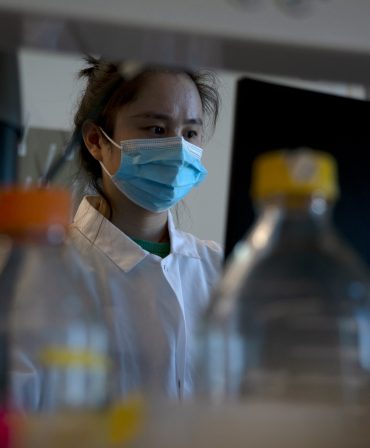
Feb. 17, 2022
Pancreatic tumor composition provides insight on treatment response
Jing Zhou focuses the microscope through her computer. The microscope feeds its view directly to her screen so Zhou can see the pancreatic cells. | Photo by Cara Penquite, Bond LSC By Cara Penquite | Bond LSC Not all tumors are created equal, and potential treatments aren’t universal. When it comes to pancreatic cancer, surgery and radiation often do more harm than good due to its rapid growth and ability to spread to the liver. Searching for alternative treatment options, Jing Zhou focused her research on immunotherapies. That led Zhou and her team to identify the sequences…